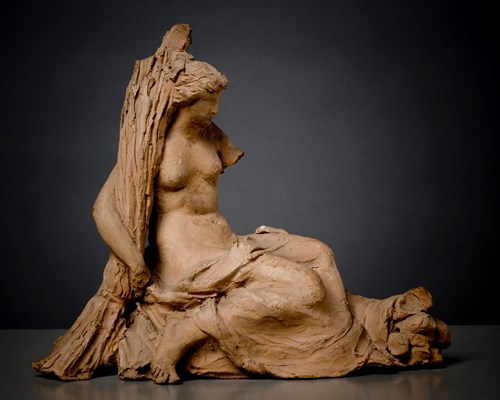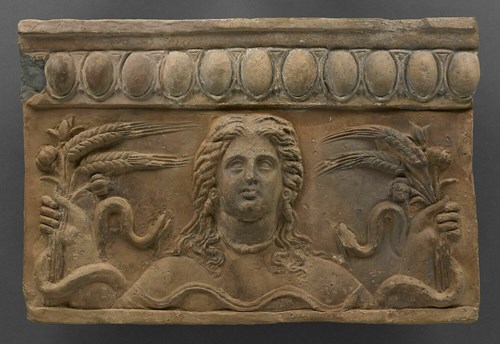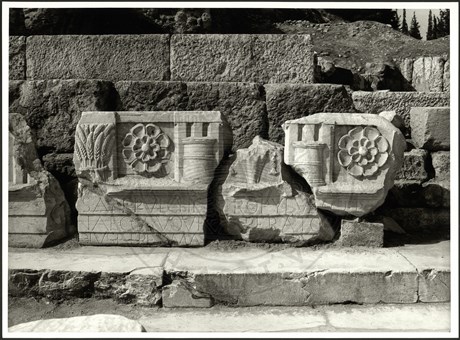Cereals were a sacred symbol of Demeter and a reminder of the goddess's ability to keep men and women alive through their cultivation. The Eleusinian tradition regarded grain as a precious gift from the goddess. She first sowed white barley in the Rharian Field near Eleusis and sent the local prince Triptolemus to teach the art of cultivating cereals to humanity. Until then, people roamed forests and fields, collecting wild fruits, grasses, and herbs that the earth spontaneously provided. The epithets of the goddess express the close connection with the tame fruits of the land and the grains that she offered to mortals: aglaokarpos, sito, polykarpos, spermia, stachiotrofos, and philopyros.

Ceres, Walter Runeberg, ca. 1838-1920, sculpture, Ateneum Art Museum / Finnish National Gallery © Finnish National Gallery
The crown of sheaves worn on the head, or the harvested grains held in hand indicate the goddesses in ancient Greek sculpture. The Hellenistic poet Theocritus from Syracuse (315-260 BCE) described a statue of Demeter smiling with sheaves and poppies in both hands. The blonde hair of the goddess, which appeared in a dazzling glow when Demeter revealed her divine identity in the well-built palace of Celeus in Eleusis, brings to mind the image of a field with ripe grains. The green barley or wheat that grows in the fields is associated with the rebirth of nature and Kore’s return from the Underworld.

Ceres, 50 BCE - 50 CE, sculpture, Musée du Louvre © 2014 RMN-Grand Palais (musée du Louvre) / Stéphane Maréchalle
The Roman theologian and ecclesiastical writer Hippolytus of Rome (170-235) showed particular interest in the role of cereals in Eleusinian worship. In his work Refutation of all Heresies, he refers to the Phrygian belief that the god is a reaped ear of corn. The Athenians followed this tradition during the initiation into the Greater Mysteries. They showed the mystai who had achieved the highest degree of initiation (epopteia), “the almighty and wonderful and most perfect mystery, a reaped sheaf".
However, the argument that wheat served as the culmination of the Eleusinian cult runs into the insurmountable problem of the frequent depiction of the grain in art. Demeter had given a clear order never to reveal the contents of the Mysteries to the uninitiated, and countless generations of mystai respected the ban. The presence of the harvested sheaves in the entablature of the Lesser Propylaea (a building that prospective mystai met before completing their initiation) and the decoration of the cysts worn on their heads by the Caryatids supporting the roof of the same building does not allow us to consider the sheaf of wheat as a sacred object.

The founding inscription from the architrave of the Lesser Propylaea, John Travlos, photograph, Εν Αθήναις Αρχαιολογική Εταιρεία © Η εν Αθήναις Αρχαιολογική Εταιρεία







